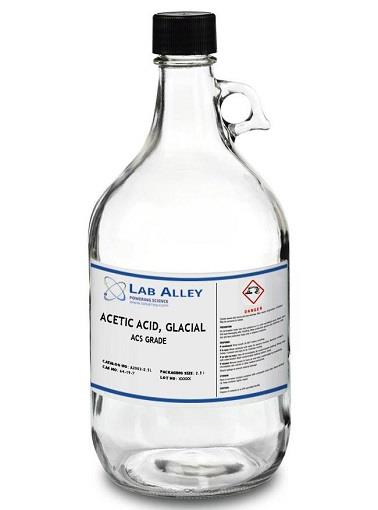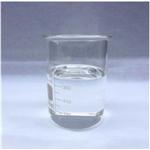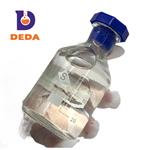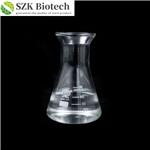What is Acetic acid?
Oct 13,2021
Acetic acid is present throughout nature as a normal metabolite of both plants and animals. Acetic acid may also be released to the environment in a variety of waste effuents, in emissions from combustion processes, and in exhaust from gasoline and diesel engines.

Preparation
Acetic acid is produced by the decomposition of solid biological wastes and is readily metabolized by living organisms. Using bacteria (Acetobacter species), large quantities of vinegar are manufactured by fermenting alcohol employing the following reaction: C2H5OH+O2→CH3COOH+H2O
Uses
Large quantities of acetic acid are used to make products such as photographic chemicals, pesticides, pharmaceuticals, food preservatives, rubber, and plastics. Acetic acid is also present as the main component of vinegar, albeit at very low concentrations that are harmless to humans. Acetic acid is used in the manufacture of various acetates, acetyl compounds, cellulose acetate, acetate rayon, plastics, and rubber. It is also used in tanning, as laundry sour, in printing calico, and in dyeing silk. It is a solvent for gums, resins, volatile oils, and many other substances. Acetic acid is widely used in commercial organic synthesis.
Mechanism of Toxicity
Acetic acid is present throughout nature as a normal metabolite of both plants and animals. Acetic acid may also be released to the environment in a variety of waste effuents, in emissions from combustion processes, and in exhaust from gasoline and diesel engines. If released to air, a vapor pressure of 15.7 mmHg at 25 °C indicates acetic acid should exist solely as a vapor in the ambient atmosphere. Vapor-phase acetic acid will be degraded in the atmosphere by reaction with photochemically produced hydroxyl radicals; the half-life for this reaction in air is estimated to be 22 days.
Physical removal of vapor-phase acetic acid from the atmosphere occurs via wet deposition processes based on the miscibility of this compound in water. In acetate form, acetic acid has also been detected in atmospheric particulate material. If released to soil, acetic acid is expected to have very high to moderate mobility based upon measured Koc values, using near-shore marine sediments, ranging from 6.5 to 228. No detectable sorption was measured for acetic acid using two different soil samples and one lake sediment.
Volatilization from moist soil surfaces is not expected to be an important fate process based upon a measured Henry’s law constant of 1×10-9 atmm3 mol-1. Volatilization from dry soil surfaces may occur based upon the vapor pressure of this compound. Biodegradation in both soil and water is expected to be rapid; a large number of biological screening studies has determined that acetic acid biodegrades readily under both aerobic and anaerobic conditions. Volatilization from water surfaces is not expected to be an important fate process based on its measured Henry’s law constant. An estimated bacterial colony foraging (BCF) of <1 suggests that the potential for bioconcentration in aquatic organisms is low.
Environmental Fate
Acetic acid causes toxicity by coagulative necrosis; that is, the acid denatures all tissue proteins to form an acid proteinate. As a result, both structural and enzymatic proteins are denatured and cell lysis is blocked. Therefore, cell morphology is not greatly interrupted. In addition, an ester is formed which delays further corrosive damage and helps reduce systemic absorption. Thus, damage, especially with small quantities of acid, is frequently limited to local sites of injury to the skin or the GI tract rather than the systemic response.
- Related articles
- Related Qustion
- What is the Composition of Vinegar and is it Acidic or Alkaline? Feb 28, 2024
Vinegar offers numerous health benefits and enhances the flavor of dishes, making it a kitchen essential. This article will introduce the composition and application of it.
- Acetic acid polarity and related applied research Dec 19, 2023
Acetic acid is a hydrophilic (polar) solvent commonly used in laboratories, similar to ethanol and water.
- Acetic Acid - Application in Meat Processing & Food Industry Mar 10, 2022
Acetic or ethanoic acid is a monocarboxylic acid which occurs naturally in plant and animal tissues and is also a byproduct of ethanol oxidation by Acetobacter , Gluconobacter and other heterofermentative strains of lactic acid bacteria.
Marine algal blooms, natural phenomena produced by the overgrowth of microscopic marine algae, have become a public health concern because of their increasing frequency and severity.....
Oct 13,2021Chemical ReagentsThe appearance of acetone in scientific thinking may be traced back to 1798, when John Rollo, an English physician, described a material in human breath of an odor of decaying apples. Later this material was identified as acetone, and it wa....
Oct 13,2021Organic reagentsAcetic acid
64-19-7You may like
- What is 1,1'-Carbonyldiimidazole used for?
Apr 19, 2024
- Reactions and Applications of Oxalyl Chloride
Apr 19, 2024
- What is Cobalt chloride hexahydrate?
Apr 19, 2024
- Acetic acid
-

- $1117.00 / 200kg
- 2024-04-19
- CAS:64-19-7
- Min. Order: 200kg
- Purity: 99.99%
- Supply Ability: 100Tons
- Acetic Acid
-

- $10.00 / 1kg
- 2024-04-19
- CAS:64-19-7
- Min. Order: 1kg
- Purity: 99.5
- Supply Ability: 10 ton per month
- acetic acid
-

- $1.00 / 1mg
- 2024-04-15
- CAS:64-19-7
- Min. Order: 100mg
- Purity: 98.0%
- Supply Ability: 5ton/month




